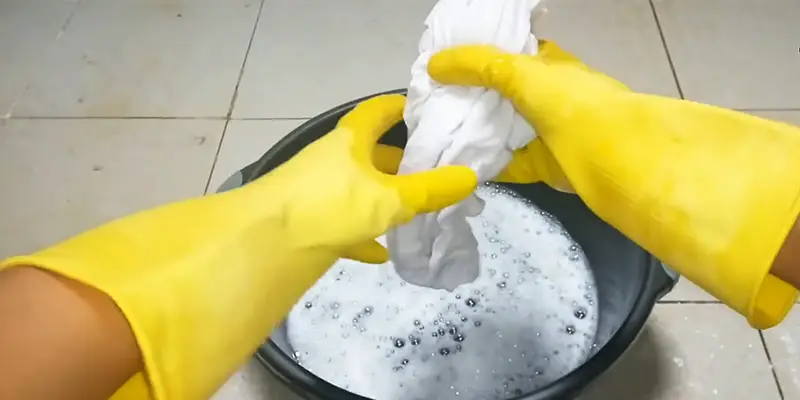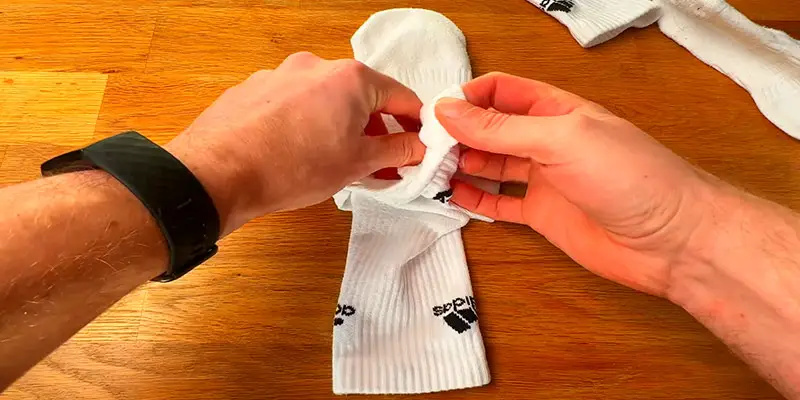Hi, I'm Christopher Bevans, the creator of SocksWiki.com. With a background in fashion design and a passion for innovation, I’m here to share my knowledge on socks from troubleshooting tips to detailed buying guides. I believe the right pair of socks can make all the difference, and through this site, I aim to help you find the perfect fit for every occasion.
Hi, I'm Christopher Bevans, the creator of SocksWiki.com. With a background in fashion design and a passion for innovation, I’m here to share my knowledge on socks from troubleshooting tips to detailed buying guides. I believe the right pair of socks can make all the difference, and through this site, I aim to help you find the perfect fit for every occasion.
Holes in socks are annoying, but you don’t have to throw them away right away. With a little time and some basic supplies, you can fix them at home.
The easiest method is called darning, which means stitching new thread across the hole to make the fabric strong again.
You don’t need fancy tools, just a needle, some thread, and something round like a ball or jar to stretch the sock.
In this guide, we’ll walk you through 10 easy steps to repair holes in socks so you can keep wearing your favorite pairs longer.
Things You Need to Fix Holes in Socks

- Needle – A standard sewing needle works well for darning.
- Thread or Embroidery Floss – Use durable thread; if using embroidery floss, split it in half and use two or three strands. A multicolored set is ideal for future mending and creative options.
- Round Object for Stretching – Traditionally a darning egg or mushroom, but you can also use a tennis ball, small jar, apple, light bulb, or a wooden disc from a loom darning kit.
- Rubber Band (Optional) – Helps hold the sock fabric tight on your round object to keep it stable while you sew.
10 Easy Steps to Repair Holes in Socks
Darning a hole in a sock involves creating new fabric by weaving thread to fill the gap. It’s a method that can save your favorite socks from being thrown away.
Here are the steps to fix holes in socks:
Step 1: Turn the Sock Inside Out
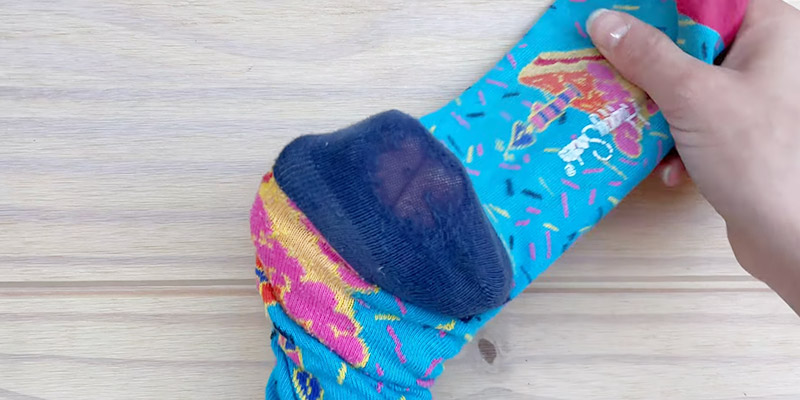
Always begin by turning the sock inside out. This ensures that your stitching remains discreet and doesn’t rub uncomfortably against your foot when you wear it later.
Step 2: Stretch the Sock Over a Round Object
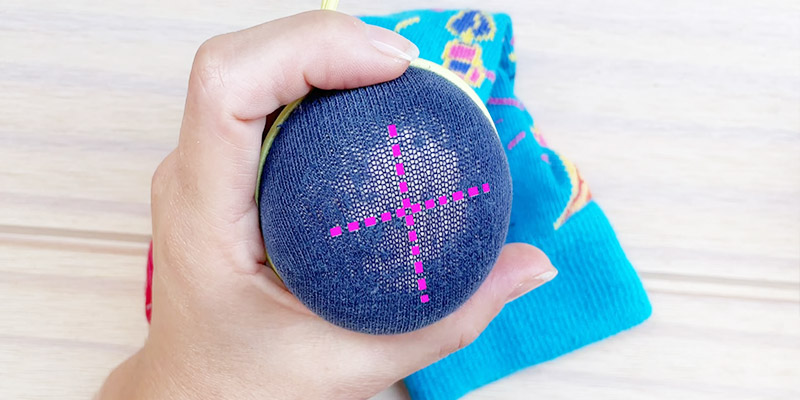
Place the sock over a small round object to hold the hole area taut. Traditionally, a darning egg or darning mushroom is used, but you can easily substitute with a tennis ball, small jar, or even an apple. This keeps the fabric firm and prevents it from bunching as you sew.
Step 3: Secure the Fabric in Place
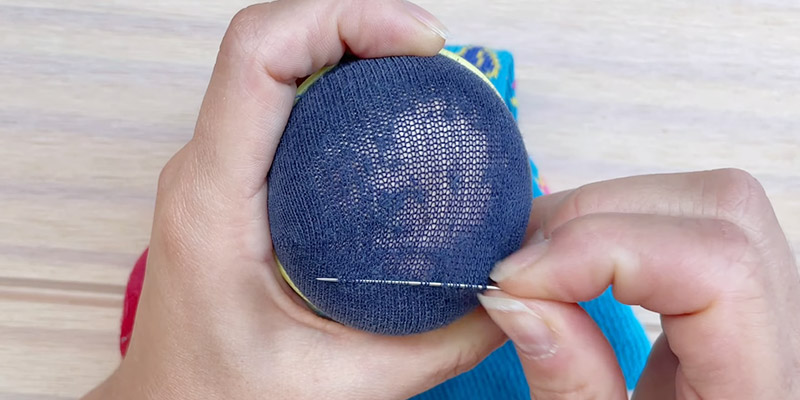
If the sock tends to move around, secure it with a rubber band around the object. This optional step makes sewing easier, especially for beginners, as it keeps the material stretched and stable while you work.
Step 4: Prepare Your Needle and Thread

Choose a durable thread that matches your sock’s color. If you’re using embroidery floss, split it in half and use only two or three strands to avoid bulk. Thread your needle and tie a knot at the end so your stitches stay secure.
Step 5: Start Stitches Away from the Hole

Don’t begin right at the hole’s edge. Instead, start your first stitches at least 1 cm away from the hole. This ensures the new fabric attaches to strong material and prevents the repaired area from tearing again.
Step 6: Create the Weft (Vertical Stitches)

Sew straight lines back and forth across the hole, extending about 1 cm past the edges on each side. These vertical stitches, called the weft, act as the foundation for your repair. Keep the stitches close together so the woven patch will be sturdy.
Step 7: Secure for the Weave
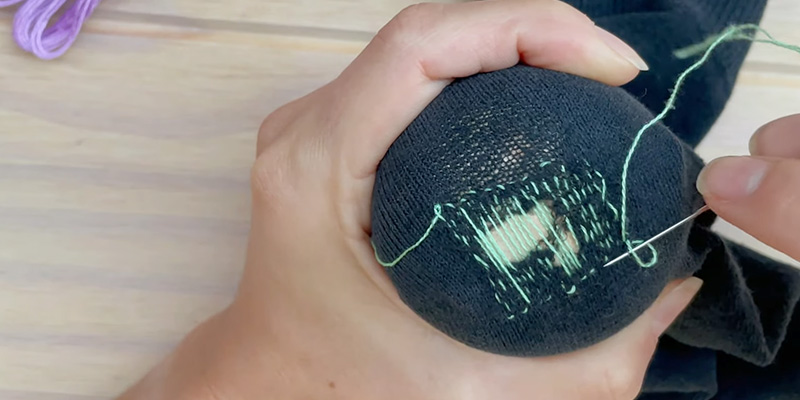
Tie off the thread about an inch away from the hole before starting the next phase. This helps lock the weft stitches in place and prepares the sock for weaving the cross-stitches.
Step 8: Create the Weave (Horizontal Stitches)
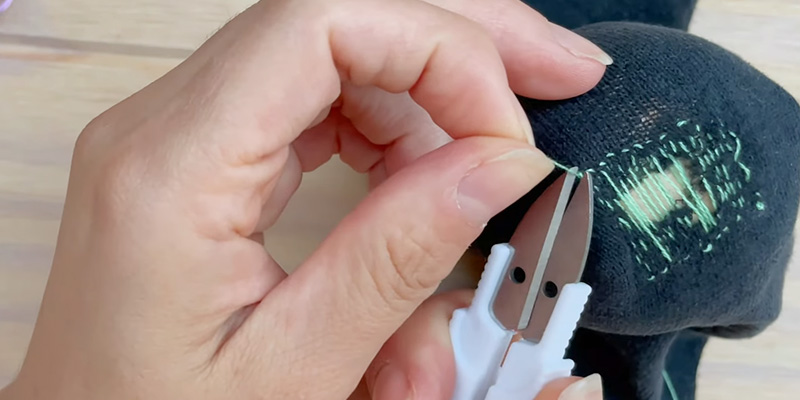
Now, stitch perpendicular to your weft. Pass the needle over and under each vertical stitch, alternating as you go. This weaving technique creates new fabric to fill the hole. Continue weaving until the entire hole is covered and you see a tight, woven patch.
Step 9: Fill in Any Gaps

Check for thin spots or missed areas. If needed, weave a few extra stitches to strengthen weak spots. The goal is to create an even surface that blends into the surrounding fabric.
Step 10: Tie Off and Finish
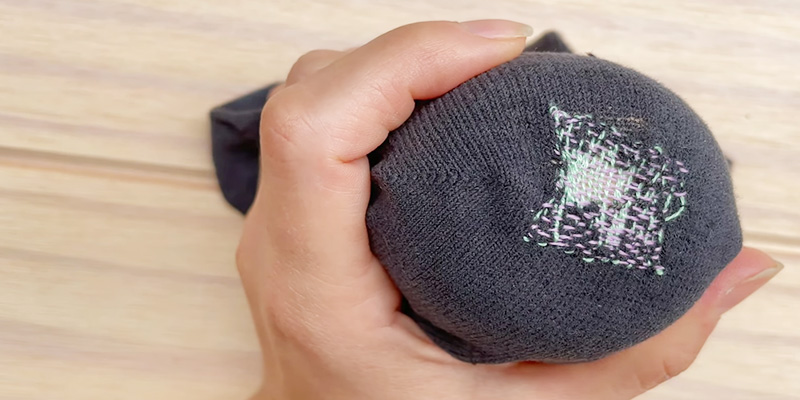
Once the hole is completely covered, tie off your thread securely. Trim any excess thread. Finally, turn the sock right-side-out to see your finished repair. Your sock is now ready to wear again, hole-free.
Why Do Socks Get Holes? 6 Reasons
Have you wondered why your favorite pair of socks suddenly develops a hole, often right in the toe or heel?
Here are the reasons why your socks get holes:
1. Friction and Constant Pressure
The most common cause of sock holes is friction. When you walk, your feet rub against the inside of your shoes, creating repeated stress on certain areas, usually the heel and toes. Over time, the fibers break down, leading to thin spots and eventually holes.
2. Low-Quality Fabric
Not all socks are created equal. Cheap socks are often made from thin, low-quality materials that wear out quickly. Cotton-only socks, for instance, are soft but not as durable as blends that include nylon, spandex, or polyester.
3. Toenails and Foot Care
Sharp or untrimmed toenails are another common culprit. They can easily poke through the fabric, especially around the toe box. Dry or rough skin on the feet can also snag fibers and cause premature wear.
4. Washing and Drying Habits
Socks go through a lot in the laundry. Aggressive washing cycles, hot water, and tumble drying on high heat can weaken fibers and cause shrinkage, making socks more likely to tear.
5. Wearing Socks Without Shoes
Walking around the house in socks (without slippers or shoes) wears them down faster, especially on hard or rough surfaces like tile, wood, or concrete.
6. Sock Age and Overuse
Like all clothing, socks have a lifespan. Even high-quality pairs eventually wear out after repeated use. Wearing the same pairs too often without rotation speeds up this process.
How to Prevent Holes in Socks: 7 Ways
Few things are more frustrating than pulling on your favorite pair of socks only to discover a hole in the heel or toe.
Here are the most effective ways to prevent holes in socks:
1. Trim Your Toenails Regularly
Untrimmed or sharp toenails are one of the most common reasons socks develop holes at the toes. By keeping your toenails neatly trimmed and smooth, you reduce the chance of them poking through the fabric. Filing rough edges also helps prevent snags that weaken the material over time.
2. Invest in Quality Socks
Cheap socks often use thin fabrics that wear out quickly. High-quality socks made from blends of cotton, nylon, polyester, spandex, or merino wool are far more durable. Reinforced heels and toes also provide extra protection in high-friction areas, keeping socks intact for longer.
3. Wash and Dry Socks Gently
Rough washing cycles, hot water, and high-heat drying damage fibers and make socks more likely to tear. To extend their life, wash socks in cold or lukewarm water on a gentle cycle. Turn them inside out before washing, and let them air-dry whenever possible.
4. Rotate Your Sock Collection
Wearing the same few pairs every day puts extra stress on the fabric, especially around the heel and toe. By rotating between several pairs, each one gets a break and lasts longer. Having a larger collection reduces overuse and prevents premature holes.
5. Avoid Walking in Just Socks
Hard floors, carpets, and rough surfaces wear down socks quickly when worn without shoes or slippers. To prevent holes, always wear slippers or indoor shoes around the house. This small habit greatly reduces fabric thinning and tearing.
6. Wear Properly Fitted Shoes
Shoes that are too tight or too loose increase friction, causing socks to rub excessively and weaken. Ill-fitting shoes can also stretch socks beyond their limit. Choosing shoes that fit well helps reduce unnecessary strain and keeps socks in good shape.
7. Store Socks the Right Way
The way you store socks also impacts their durability. Balling them up or stretching the elastic too tightly weakens the fibers over time. Instead, fold socks neatly and keep them in a clean, dry space to maintain their shape and strength.
Also read: Best Socks to Prevent Holes

Hi, I'm Christopher Bevans, the creator of SocksWiki.com. With a background in fashion design and a passion for innovation, I’m here to share my knowledge on socks from troubleshooting tips to detailed buying guides. I believe the right pair of socks can make all the difference, and through this site, I aim to help you find the perfect fit for every occasion.
- Latest Posts by Christopher Bevans
-
What Socks to Wear With Cowboy Boots?
- -
Grip Socks vs Regular Socks: Which One Should Wear?
- -
Are White or Black Socks Better: Comfort, Style, and Function
- All Posts

